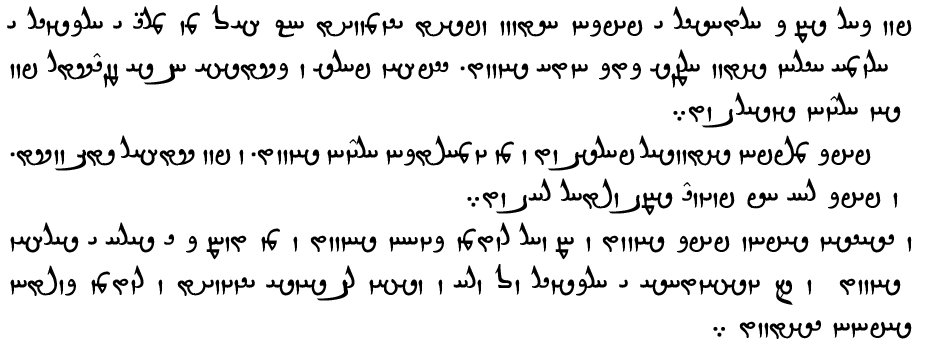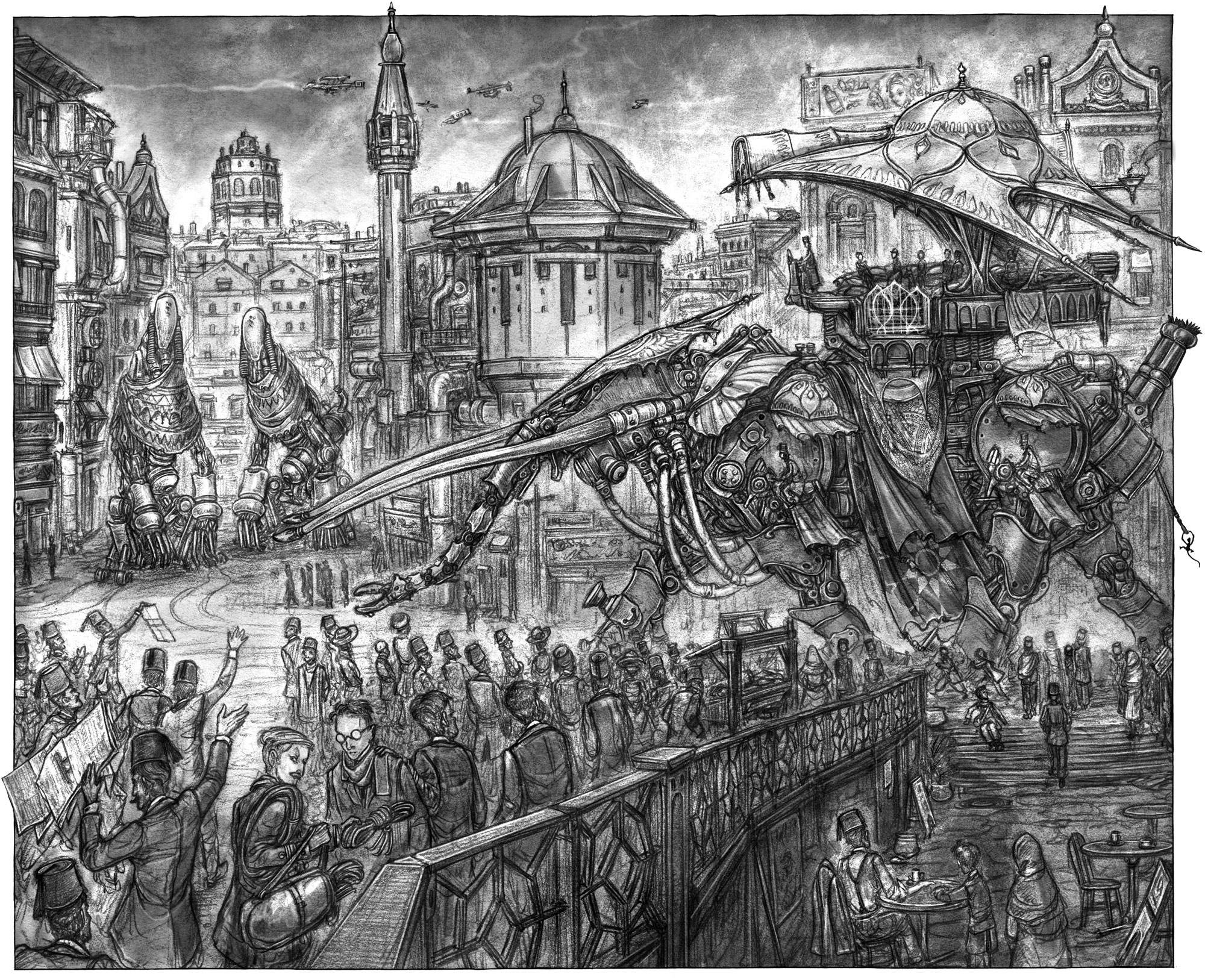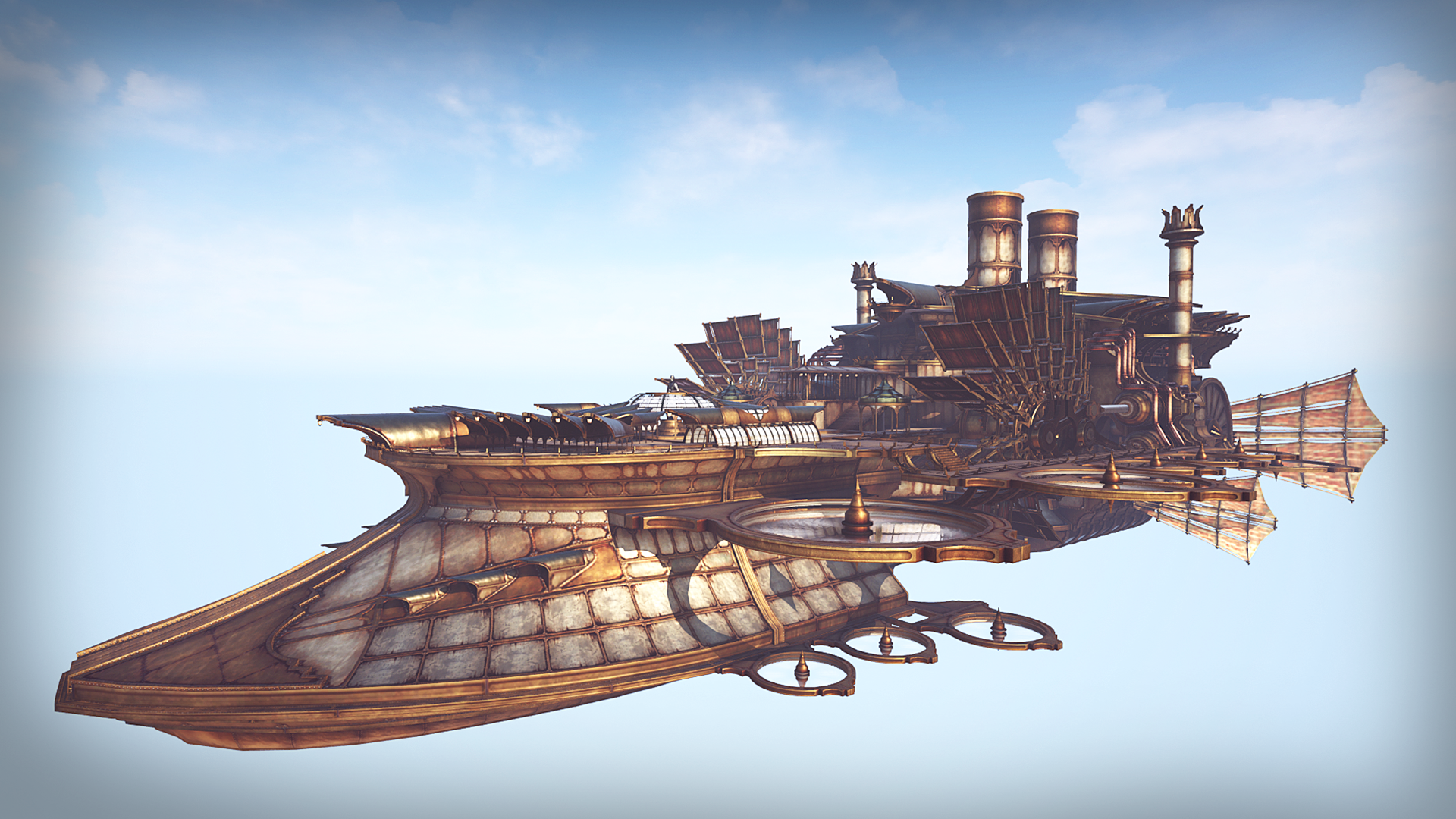Semid Empire
Shahzadeh Semiyyânâm
Nation Intro
The Semid Empire is a unified state, the third unified nation made up of lands inhabited by the Semiyya, also known as the “Silver Elves” in other languages; collectively called Semistan. The Semids are a powerful steam empire, established only 300 years ago in the Wars of Unification. With a history deeply intertwined with legend, and empires rising and falling time after time in Semistan, anything is possible in this part of the world.
Geography
(Choose a color and draw your borders on the map. Also you get the freedom to describe the environment and geography of your nation here, within reasonable limits. You can even talk about the important zones or places within your borders.)
History
The History of the Semiyya goes back to their earliest ancestors, the ones that they call the Pakiyya, or the Pure Ones. History of the Silver Elves has traditionally been divided into 5 Eras, The Awakening, the Wandering Era, the Heroic Age, The Warring Times, and the Age of Steam.
The Awakening“In those distant years, when the earth and sky were one; In those long past nights, when the stars were first lit, we found ourselves with purpose, life gifted to us, breath pushed into our lungs, as our souls intertwined with the clay of the world, and light was born within” - Beginning words of the Shahansha’ar (The Song of Kings)

According the Semiyya legends, the Pakiyya were created by the god Illahu'l-Abu in a place called Apas. A giant inland sea, Apas and the Pakiyya were said to be in existence before the Earth and Heavens were split apart, and thus, the land was a place where night and day did not exist separate from each other, where time did not flow like we know it. Illahu'l -Abu lived alongside his creation, nurturing them and preparing them for the world that he was planning to create. Illahu'l -Abu, once he was sure that his creation could survive in a hostile universe, bid them farewell and separated the universe into two, leaving the Pakiyya to go out and colonize the world.
Past their legendary origins, it is known that the Pakiyya arrived as some form of proto-elf from farther west, and their distinct culture is autochthonous to the region of Semistan, with the first verifiable accounts of the existence of the Pakiyya comes from the dried remains of a small inland sea, since gone from climate changes. The Pakiyya would branch off from this area, and migrate in all directions around the dying sea, filling out the borders of what would become Semistan. It is thought that their ancestors, proto-elves, migrated to this inland sea from another area, and began to radiate outwards, interbreeding with the local peoples, orcish tribes, and driving them to the far north and south of Semistan, to create a very divergent group of elves in terms of their social order, behavior, and even their appearance to an extent.
The Wandering Era
The Wandering Era consists of the nomadic years of the Pakiyya, as they went about their time diverging from their Urheimat outwards. Starting out largely as a singular, pastoral nomadic people, the Pakiyya slowly began to diverge amongst themselves, and form new clans, tribes and identities. The separation of the Ancestral Elves is considered by most historians to be the end of the Pakiyya, and the creation of the Semiyya. For the most part, this era is largely unimportant, save for its ending. In this time, the Semiyya began to develop methods of agriculture, and settled down into sedentary lifestyles, and devloped urban lifestyles. Of the most important events was the rise of a man who called himself Srîraoxshan, and was born of the tribe Arxa. Sriraoxshan claimed to be a prophet sent from Illahu'l -Abu, and was gifted the Legendary Sword of Mitra from God himself, and told to go out and unify the people under one ruler. In the Twilight years of the Wandering Era, Sriraoxshan and his followers went out and conquered all the tribes and city states of Semistan, uniting them in the religion of Hvar, under the legendary Yasna Empire. The Yasna Empire would last for 2000 years, until its collapse at the hands of a massive change in the local climate to that of a hotter one, that killed much of the dense forests that blanketed the mountains of Semistan, and withered away much of the grassland. Said to be the result of a corrupt king, the massive change in environment lead to the end of the First Empire, and marked a transition to a new era
The Heroic Age and the Warring States Era
“Truly, this is no land for the good; only men without virtue could stand a chance to live in our times” - from the Shahnasha’ar

The Heroic Age is a semi-legendary time, described in a variety of contemporary writings, and often romanticized and written about in later times. In this time, Semistan once again found itself in a multitude of states, and with the advent of writing, advanced metallurgy and the growing influence of organized religion, the nation was seeing a great deal of war and conflict. Many of the great wars of Semiyya history were fought in this time, detailed in the epic history of the Shahnasha’ar. By far the longest period in Semid history, Empires rose and fell in this time, but the most important was the Silver Kingdom of Sem, a massive nation that started as the bronze age kingdom of Sem, and would go on to control most of the Semiyya inhabited areas. Sem would be so influential, that it would lend its name to the very people who lived there. Sem saw the development of iron, feudalism, machinery, philosophy and provided easy access of new ideas and developments. However, Sem would work as an antagonist in the land, moving north and south to conquer the Semic Orc tribes, who had avoided conquest by the Yasna, but would now be integrated under Semiyya authority. Sem would exist for 2000 years before falling apart, slowly degrading over time.

With the fall of Sem came another period of unrest, but also another era of great culture, as many works of literature and art came about in this time. Most notably, the creation and composition of the Shahansha’ar, to document the history of the Semiyya. In this time, many a nation had held say over others, and arms races were common between nations of Semistan for power. One of the more interesting developments in this time was the arrival of an elf who called himself Mahdi, that arose during the time of warring states period as a traveling merchant. Mahdi rose in power after coming into prophethood, and became king of a small Shahdom, only to conquer all his surrouding nations in the name of God and strenght for the people of Semistan, guided by the power of the Sword of Mitra, which was recovered and used by Mahdi himself. Soon, the nation would become one again, but not until the transition from the age of horses and swords had given way to the time of gunpowder and steam, when machines came to dominate, a period of many centuries since the fall of Sem, Semistan was reunited once again. Under the Semid Empire, the nation has seen growth into a powerful nation powered by steam.

Once more as one, Semistan has only the future ahead of them, as they rise up, and face the new world.
Society
The SemiyyaThe people of the Semid Empire are the Semiyya, also known as the Silver Elves, named after the golden age kingdom of their past, the Kingdom of Sem, Sem meaning Silver in their language.

The Semiyya are the known for having a kind of bronzish complection, however their hair ranges from dark black to blond. Silver Elves are taller than humans, standing about 6'2" for females and 6'9" for males on average.
The origins of the Semiyya are shrouded in legend. While most belive in the story of The Awakening, modern reseach suggests that the arrived with proto-Elvish stock that migrated into the area of Semistan and may have gained distinctness though interbreeding with indigenous orcish peoples. Though, the Semiyya are not half-elf/half-orc hybrids, but rather elves with an orcish heritage. This has often been seen as a reason for their violent history and tendency for infighting.
Semic Orcs.jpg/revision/latest?cb=20131203183247)
Semic Orcs are a sub-grouping of Orcs, thought to be indigenous to many areas of Semistan, which they share as a native land alongside the Semiyya. Though perhaps share is a euphemism. Since the dawn of both species, they have constantly vied for control of land, resources, and power has driven much of a wedge between the two peoples. Primarily living as tribal people, it has been noted that the Orcs of Semistan show a great deal more civilization and advanced social structure than their Togluth cousins to the north. Likely, the constant conflict with the rapidly advancing Semiyya had triggered a sort of arms race. In any case, the Semic Orcs feel no kinship with the Togluth tribes, and consider them to be enemies, especially due to raiding. For the most part, they no longer occupy single areas, and are often scattered. The majority exist as "Mamluks" or, a caste of Warrior-Slave nobility owned personally by the Padishah. Mamlukship is hereditary, and so a Mamluk, and all of their children, are considered property of the State. But this is not a bad existence. Indeed, many of the Mamluks enjoy luxurious lifestyles; large homes, fortunes of pay, nobleman status, slaves and cocubines, all at the condition that they convert to and follow the Faith of Illahu'l-Abu, and fight for any wars that the king calls them into.
Orcs have their own language and are culturally distinct, as shown with the names of the 3 resistance leaders during the Heroic Age; Munčuq, Bilge, and Avithohol.
Orc-Elves:

Perhaps one of the more strange groups in the Semid Empire are Orc-Elves. These souls are, as one may guess, born of an Orc and an Elf parent. Due to the nature of Semid Socity, almost all Orc-Elves are Mamluks, though they usually are culturally Elvish, while maintaining an predominatly Orcish appearance. As a result, the colloquial name for these people (Ghul) is usually used as slang for someone who is pure Orcish, but behaves in the ways of an Elf.
They generally live good lives due to their position in the Mamluk system, and little discrimination is known towards them due to their status as nobility, though, those born of an Elven Father and Orcish Mother are without Tribal ties (as tribal membership passes patrilineally), and as such, may be seen as outcasts, though this is little more than a sub-cultural problem, as in many ways, the Mamluk identity fills the need for tribal ties.
95% of male Elf-Orcs are sterile, however only 25% of female Elf-Orcs are infertile. Due to this, the children of Elf-Orcs are usually considered Elves or Orcs due to being 3/4 of one group, these second generations are fully anatomically and behaviorly Semid or Orc, and all "Elven Mamluks" were created in this method.
Culture:
The culture of the Semid Empire sees ancient influences from the Heroic Age mixed in with modern ideas.

Though no longer a nation of nomdads or warriors fighting among themselves, they still adhere and admire the old ways of their acestors, and so the people of the Semid Empire exist as a strange mixture of ancient philosophy in a world of modern technology. The culture of the Semiyya revolves around their history as nomads in a rocky, dry plateau environment, with agriculture always being something of a limited skill in these ages. Even now, Hunting is a popular sport done for gathering meat and for pleasure, with hunters taking pride in the use of the sword as their primary method of killing.
Poetry is a widely respected art form in the lands of the Semids, as is poetry recitation. A reletively new form of art showing up in modern Semistan is "Free Recitation", where a musician plays a song, and a poet must create verses to the adhere to the rhythem of the music. Often, a varient of this is "Battling" where two poets go against each other, often taking jabs and blows at each other in their compositions, with a winner decided after the are finished. Semistan is well known for its vibrant and rich tradition of litterature, with books such as the Shahnasha'ar, and others holding status as classics. Aside from poetry, other art forms that flourish in Semistan are Calligraphy, Geometric designs, Architecture, and gardening. Paintings depicting living beings and sculpture do not have much representation in the country.
Semian Language
Semian is an Elven language, though it is very divergent and belongs to its own unique branch. Like other Elven languages, it is known for its complexity and nuance, though, as Semistan has been a land of conquerers, it has become more simple for outsiders to grasp, and influced from the language of the Orcish tribes. There are two registers of the language, High and Common. High Register is vastly different from common, almost behaving like a different language.
High RegisterAdam xšāyaθiya visadahyūnām han
Common RegisterMan shah az hama sarazmin haa
ReligionThe religion of the Semiyya is called Ahvata, and revolves around the worship of a single creator god named Illahu'l-Abu. Both the name Ahvata and Illahu'l-Abu are thought to be cognates to ideas in the related elven religion of Arvandor and its creator god Eru Iluvatar, with both arising from similar elven folk religious climates. Ahvata is a fiercely monotheistic religion, and does not tollerate what it sees as polytheism, associating others with Illahu'l-Abu, black magic (magic invoking deities or powers other than the one god), or heresy. Followers of Ahvata refer to the world as "Dunya", and their religion can be traced back to the prophet and reformer Mahdi and his holy book, The Injīl, said to be a complete reconstruction and purification of true elven religion, as it was practiced by the Pakiyya in the time of Creation. Mahdi abolished formal, landed clergy, instead pushing for clerics who were common people, created the idea of a nation being founded on ideals and values from the holy book, reducing the weight of slavery, mandatory charity taxation, daily prayer and other reformations to the elven religion. This variant of Elf Religion boomed with popularity in Semistan and beyond, and currently is the 2nd largest Elven Religion, falling behind Arvandor. It exists as a sort of Islam in opposition to the Roman Catholicism proxy of Arvandor. The important artifact, the sword of Mitra (Mitra meaning Truth in Semian), is carried in the possession of the Padishah, as a show of descent from Mahdi.
Economy/Industry
(What is your economy like? What do you mine, produce, trade? How developed is your nation in terms of technology? Anything unique you invented or even make?)
Military

The military of the Semids consists of the latest of militaty technology that the empire can get its hands on. Its soldiers are equiped with the latest in firearms, and equipted with powerful steam machines and artillery. Pushed on by the ideals of the Heroic Age, the army still adheres officially to the code of honor created during these times:
- Innocent people should not be killed.
- Women, children, or old people should not be killed or hurt.
- Women must not be raped.
- Enemies must be treated with justice.
- Wounded enemy soldiers must be treated in exactly the same way as one's own soldiers.
- The war must stop as soon as the enemy asks for peace.
- Property must not be damaged.
- Poisoning wells is forbidden.
Though these tenants act more like a guideline or an ideal than how the Semids actually make war.
The Mamluks A Semid soldier standing next to two Mamluks
A Semid soldier standing next to two MamluksMamluks are an elite, slave-soldier caste, primarily made up of the Semic Orcs as well as Orc-Elves, who fell under Semid Control in the Heroic Era, and even maintained some historical Mamluk Shahdoms in the Warring States time. Historically, they have been the best soldiers, acting with the strength and ferocity of an orc, with the training and discipline of an Elf. Often equipped with the best equipment available, with full suits of Mithril armor, and weapons of the highest caliber. They have proven quite a formidable foe on the battlefield and maintain their willingness to fight in exchange for the continuation of their luxurious lifestyle.
Walkers and Airships Walkers on parade in a Semid City
Walkers on parade in a Semid City The control and taiming of Steam power has allowed the Semids to create monsters of war from steel and engines. Walkers are the most commonly employed. Though they are often clunky, and slow, their strong building materials and size often allow them to take quite a beating while plowing through enemy lines. The most commonly deployed are called "Filler", named after the Semid word for Elephant, and in reference to the use of elephants, which have since gone extinct in Semistan, during the Heroic Era. In battle, the Walker acts much like a tank, while a gunner crew in the bridge work to aid in taking out other soldiers.
Other Walkers that are deployed include Orekler, which resemble large, humanoid shaped robots, and which mostly act to charge into enemy lines, and flail around to cause casualties. However, their bipedal design is much less stable than the more tested Quadripedal movement in the Filler

Airships are a relatively new form of transport and military technology, and as such, makeup only a small portion of the nation's military, and are often repurposed as commercial civilian vehicles during peace time.










.jpg/revision/latest?cb=20131203183247)







